Review| Baby Driver
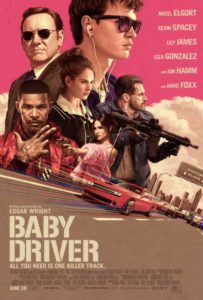 If you expect your films to have narrative complexity, don’t go see this film.
If you expect your films to have narrative complexity, don’t go see this film.
If you expect your films to break apart common cinematic tropes and characterizations, don’t go see this film.
If you want your musicals to contain characters that unabashedly break into song and dance, don’t go see this film.
If you want to rekindle the excitement of experiencing a film like you did as a kid without all of the baggage of being an adult, formal analysis, and film rating and aggregator sites, go see this film.
I can’t honestly remember the last time I came out of a film without “having an angle” on it, an interpretative framework in which I could think on its meaning and write on it. Sure, there is an emotional response to the films I see, but I would quickly repress those feelings in order to seek out “the greater meaning” within its core. I am a critic, it’s kind of my job and that is okay, but, man, I miss that visceral enjoyment of film that I used to get in that one-screen theater with the sticky floors in Canyon, TX on a Friday night. In those days, I didn’t think films had to be bigger than themselves. They could just be and be enjoyed.
I recognize that this narrative I am telling myself is too simple. Its largely based on an idealized nostalgia that I have yet to kill off along with memories of looking at box artwork at video stores and recording songs off the radio with cassette tapes. Yet when I came out of Baby Driver, I felt invigorated and I didn’t really have a byline for this review. Which is, honestly, terrifying, because I have to write at least 800 words about this film. However, I found myself happy and energized by the film. This is pure cinema. The last time I was so emotionally engaged in a film without my mind hijacking the experience was when I saw Die Hard and A Clockwork Orange at way too young of an age.
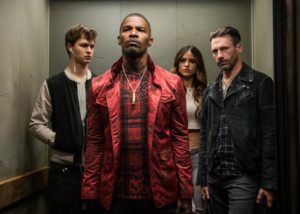 I admit I was not initially excited by the announcement of Baby Driver. Edgar Wright, while liking all but one of his films—I’ll let you guess which one—is not a director I get truly excited about. I’m not entirely sure why this is the case. When I heard it was a musical of sorts, I became further detached from the project because musicals are not my bag. I saw the trailer for the film and it did nothing for my expectations either. However, when the soundtrack listing was released, I fell and I fell hard as I pushed the pre-order button. I may not get excited about Wright’s new films, but I am now excited about his ability to put together a quality mixtape.
I admit I was not initially excited by the announcement of Baby Driver. Edgar Wright, while liking all but one of his films—I’ll let you guess which one—is not a director I get truly excited about. I’m not entirely sure why this is the case. When I heard it was a musical of sorts, I became further detached from the project because musicals are not my bag. I saw the trailer for the film and it did nothing for my expectations either. However, when the soundtrack listing was released, I fell and I fell hard as I pushed the pre-order button. I may not get excited about Wright’s new films, but I am now excited about his ability to put together a quality mixtape.
Baby Driver is a musical for people like me who don’t care for musicals. Each scene was written and choreographed around the 30 songs that Edgar Wright specifically chose to create the flow of the action around. Many of the songs are widely sampled tracks in hip hop acts such as De La Soul (probably my favorite hip hop crew), Handsome Boy Modeling School and many others. The selection of these songs was not arbitrary for Wright simply because he knew there was a rhythm and beat with which choreography could be done effectively considering rappers had been flowing off of those beats for thirty years or so.
When I say choreography, I don’t mean it in the sense of something like La La Land or Singing in the Rain, but that all of the movements, speech and action are tightly knitted to the rhythm and beat of the song with which the scene was written. The actors had devices in their ears that would play the music while they were doing their scenes so that they were conscious of the meter their movements and speech should meet.
However, the beauty of all of this is that a person could go into the film and not notice the intentional choreography used, but just enjoy the action and the music as if it were any other film where the soundtrack was front and center in creating the atmosphere of the film. That is how tight the choreography is and why the film works on so many levels for casual filmgoers and focused movie snobs.
 The star-studded cast, including Kevin Spacey, Jon Hamm and Jamie Foxx, all turn in highly delightful performances that bring out what each of them do at their very best. However, the star of the show is Ansel Elgort, playing the title role, who probably has the least lines of any character and yet commands the screen with his facial expressions and his charismatic spirit. With such a stellar cast—that are given full freedom to ham up their performances—Elgort still comes out of the film giving the most mesmerizing performance.
The star-studded cast, including Kevin Spacey, Jon Hamm and Jamie Foxx, all turn in highly delightful performances that bring out what each of them do at their very best. However, the star of the show is Ansel Elgort, playing the title role, who probably has the least lines of any character and yet commands the screen with his facial expressions and his charismatic spirit. With such a stellar cast—that are given full freedom to ham up their performances—Elgort still comes out of the film giving the most mesmerizing performance.
So, no, this is not complex cinema, but it is joyous cinema, something that Hollywood has needed a dose of for quite some time now. Leave it to Wright to deliver something as emotionally effective and gleefully cinematic as Baby Driver. I may now become one of those fans who gets excited when his next film is teased. We’ll find out soon enough.


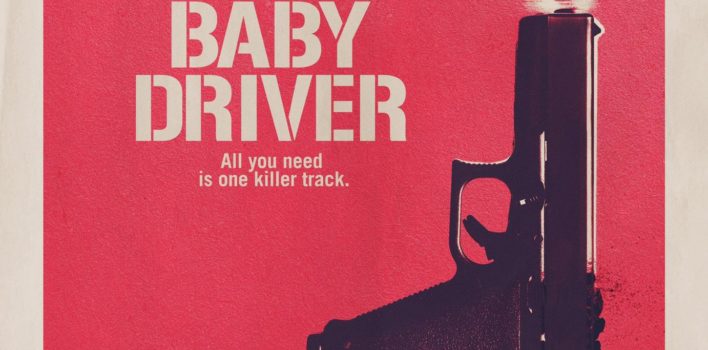
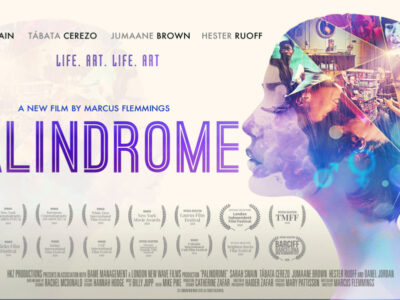
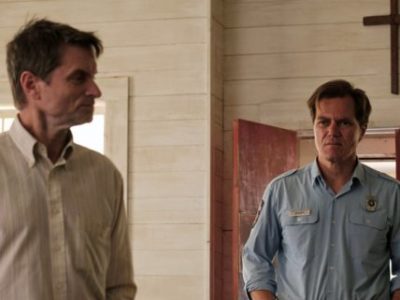
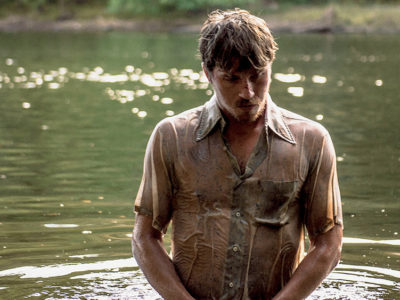


Pingback: #139 – Baby Driver and Subversive Cultural Privilege | Reel World Theology